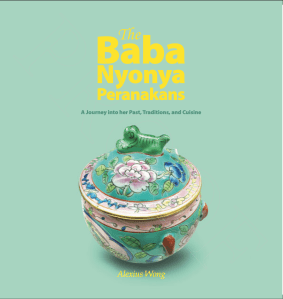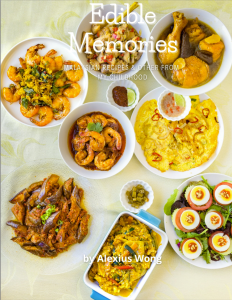
The Peranakans are very fond of duck, especially when it is made into this savory and sour soup. However, they believe that duck meat is very rich and frequent consumption may overwork one’s digestive system, which is why there are only a handful of duck recipes in the Peranakan culinary repertoire. Therefore, this dish was served infrequently at home but made a special appearance during certain auspicious days like Chinese New Year, the eve of a wedding, birthdays, funerals, and religious celebrations. However, due to its association with religious events, some traditional families refrain from serving it during ceremonies; I’m including it as it was my family’s tradition to do so. My Chinese relatives and houseguests would help themselves to a second serving when it was served for special dinners, relishing the wonderful flavors found in this full-bodied yet rather simple soup.
My paternal grandmother, Madam Lee Khoon Thye, was quite well known for her rendition of this dish. She was much sought after for her culinary skills both in savory dishes and desserts, a feat not achieved by many Nyonyas. Local Peranakan families would ask her to prepare the classic dishes, this duck soup included, and desserts for special occasions like weddings and special dinners. She became a master of Nyonya cooking both out of love for the cuisine and the sheer necessity of supporting her family as a single mother by selling her food products. Unlike many versions of this recipe, she kept the dish rather simple, omitting the use of other sour ingredients like the pickled plums found in other versions. The pickled mustard vegetable and the tamarind slices are sufficient enough to bring the sour element, which in turn balances out the rich duck flavor.
This recipe requires the dried slice form of tamarind (asam keping or asam gelugur) that is sometimes difficult to find outside Malaysia. However, if necessary, they may be substituted with preserved plums in vinegar and salt, but not with tamarind paste since the broth has to be quite clear. When buying the pickled mustard vegetable, buy the kind from China—not the local Malaysian one, which tends to be leafier—and preferably found in vats in Asian stores; they have fewer chemicals and preservatives.
Just before serving, a piece of fresh chili is torn into the bowl before filling it with the hot soup, adding a piquant bite that makes the soup even more irresistible. The shot of brandy added to the soup is important to mask any gamey flavor from the duck. I always insisted on adding an extra shot in the kitchen before it was brought out to the dining room. No doubt this made everyone love the soup even more!
Recipe from The Baba Nyonya Peranakans book
Serves 4 to 6
Preparation time: 1 hour, 10 minutes
½ duck (1 kilogram or 2 pounds), skin on, washed well, jointed and breast cut into three pieces
300 grams (10½ ounces) pickled mustard vegetable (Cantonese: humm choy), leaves separated, soaked in water for 30 minutes, then drained, cut into large pieces
2.5 centimeters (1 inch) fresh ginger root, peeled and lightly crushed
12 pieces dried tamarind slices (Malay: asam keping/asam gelugur), or 9 pickled plums, lightly smashed
1 large tomato, cut into bite-size pieces
Salt
1 to 2 fresh Finger Hot red chili peppers
1 tablespoon brandy
- In a large pot, place the duck, the pickled mustard vegetables, ginger, tamarind slices (or pickled plums), and enough water to cover the duck. Bring to a boil. Cover and cook over medium-low heat until the meat barely falls off the bone, about 1 hour. Skim the fat off during this process.
- Remove the tamarind slices once the soup is sour enough to your preference. Add more slices if it is not sour enough and boil for 10 minutes more—it has to be quite sour. Add more boiling water if necessary. Add the tomato for the last 10 minutes. Season with salt if necessary, which it may not be if using pickled plums.
- When ready to serve, break the chili pepper(s) into the serving bowl before pouring the soup into it, then add the brandy.
The soup can be made a day ahead for a better flavor. Pork bones can be added at the same time as the duck, to add more flavor to the soup.


The hardcopy and e-book of The Baba Nyonya Peranakans book (1st image) and Edible Memories e-cookbook (2nd image) are available – more information on the Homepage.

Like many Nonya dishes, it tastes better after a day or two. I always have fresh broken red chilis in the soup. The spiciness acts with the sourness and gives the soup a better taste.
LikeLike
Yes, this soup cannot do with that broken chili for the bite. Always a favorite soup for all, Peranakans or not.
LikeLike